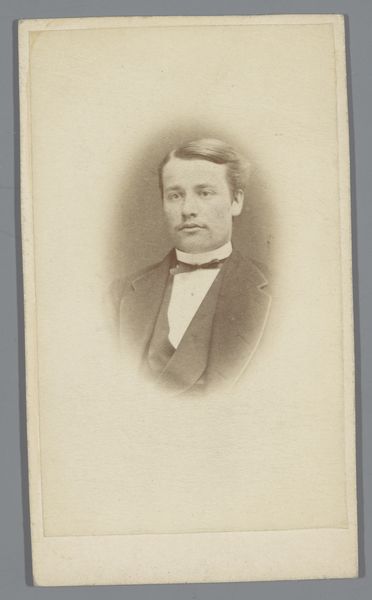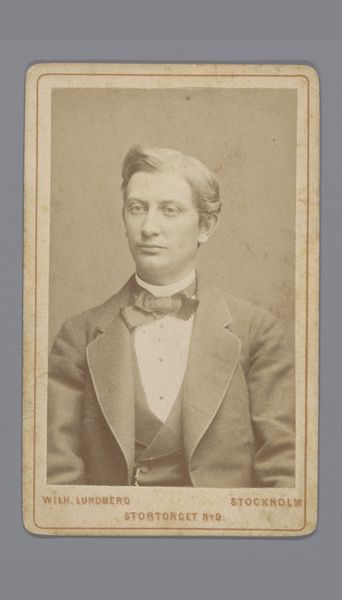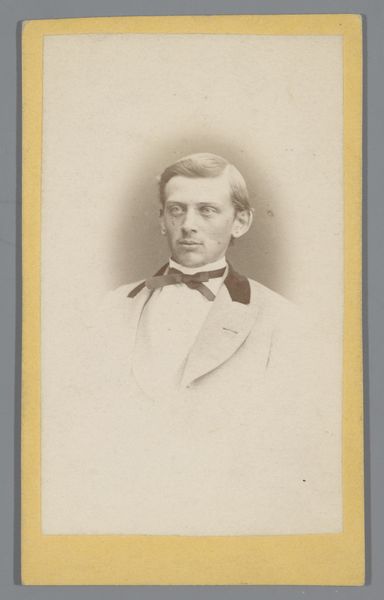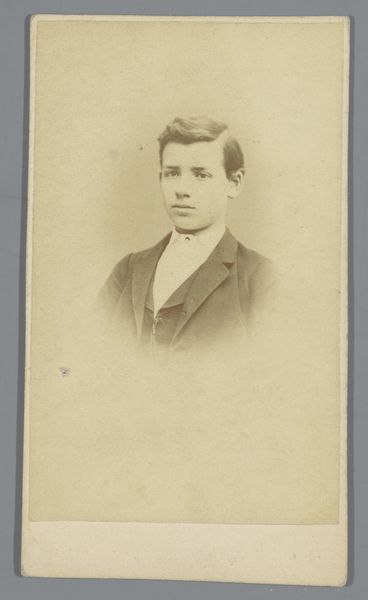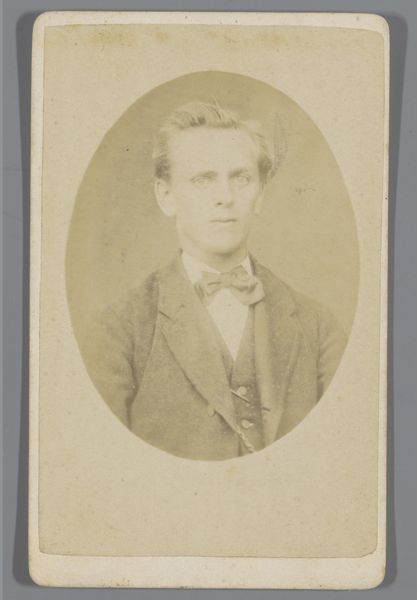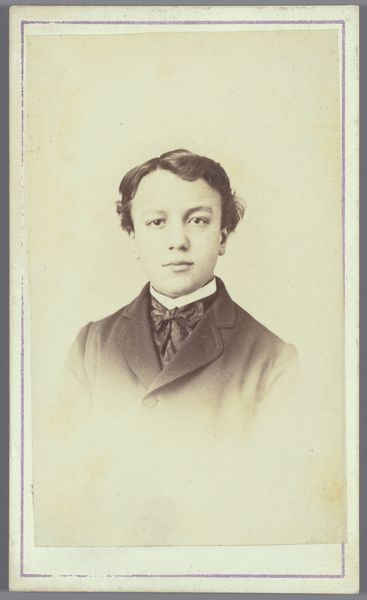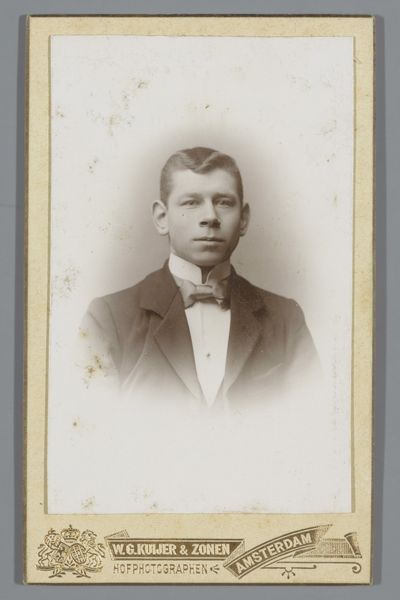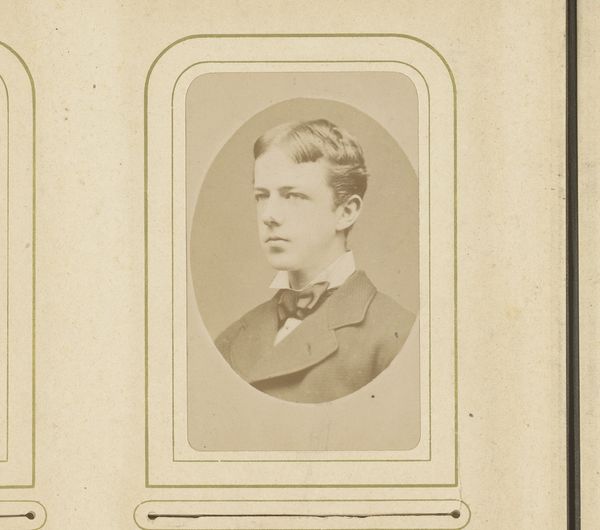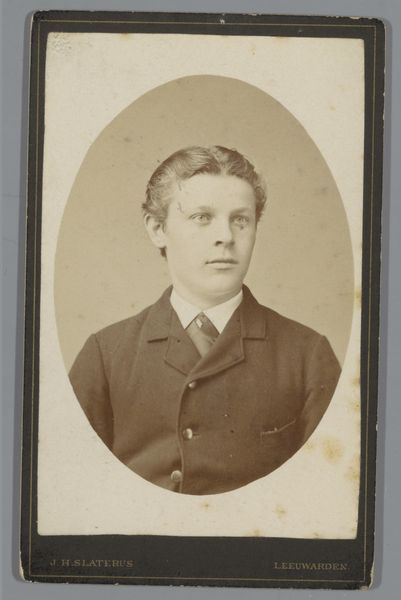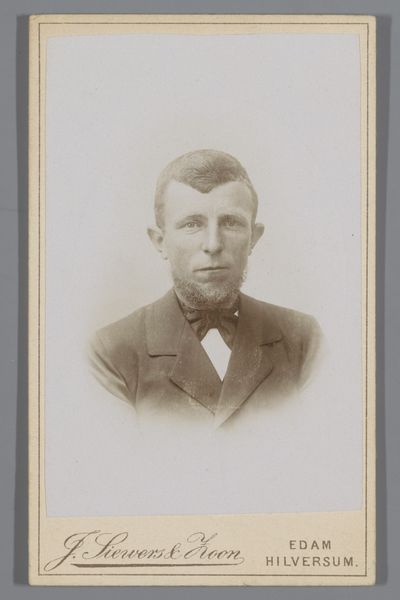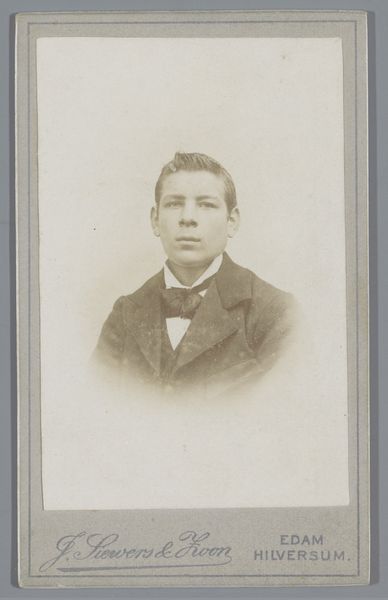
photography, gelatin-silver-print
#
portrait
#
photography
#
gelatin-silver-print
#
realism
Dimensions: height 104 mm, width 62 mm
Copyright: Rijks Museum: Open Domain
Editor: This gelatin-silver print, "Portret van een onbekende jongen," or "Portrait of an Unknown Boy" dates back to sometime between 1860 and 1880. There's a striking formality to the image, yet something about the subject's eyes suggests vulnerability. How do you read this work? Curator: This piece exists within a complex history of portraiture, and the democratizing potential of early photography. Consider the moment this image was created; photography made portraiture accessible beyond the wealthy elite. This allowed for broader representation but also raises questions about who was deemed worthy of being remembered, and how their identities were framed. Who might this boy have been? Editor: That's interesting. His clothes suggest he's from a privileged background. Curator: Precisely, and the very act of commissioning this portrait implies a certain level of social standing. How does the image, in its composition and materiality, serve to either reinforce or subvert established social hierarchies? Editor: It's such a standard pose. And yet his gaze somehow breaks that conventionality. He doesn't quite meet the viewer’s eye. Curator: Yes. Think about the performative aspect of portraiture, particularly during this era. There was pressure to conform to certain ideals of respectability and class. Do you see the tension between this ideal and the individuality of the subject? And, how does the anonymity—his being "unknown"—alter your perception of this photograph? Editor: I guess it invites us to project our own ideas of history and identity onto him. Without a name, he becomes more of an every-person from that era, representative of youthful expectations or even anxieties. Curator: Exactly. It's in that space between the individual and the archetype that we find a powerful dialogue with the past. This piece serves as a poignant reminder of how photography can be both a tool for documentation and a medium for shaping narratives about identity and social history. Editor: This perspective really shifts how I see this image! Thanks.
Comments
No comments
Be the first to comment and join the conversation on the ultimate creative platform.

